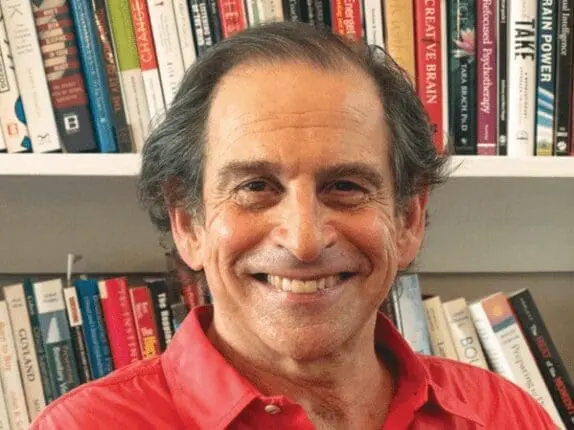There’s no denying it: I’m a man of routine. Five days a week, I get up and have breakfast, which is a cup of yogurt mixed with a half-cup of granola, washed down with a mug of English Breakfast tea. Then I drive 3.2 miles to the Networker office, where I sit at my desk for seven or eight hours, reading and marking up manuscripts, talking with writers, and then marking up more manuscripts. Periodically (and somewhat addictively), I take “news breaks” and plug into the wider world, where I’m regularly greeted by scenes of violence, climate disasters, political bullying, and repeated assaults on the truth. Overwhelmed, I close my browser and return to my smaller “safe place”—marking up manuscripts.
At the end of my workday, I go to the gym, where I jog on the treadmill while watching the news on an overhead TV screen. Once again, I make contact with a larger universe, which shows me more malice and ineptitude on a grand scale. And once again, I become overwhelmed and turn my gaze away. Things are so terrible that I can’t imagine what I could do to make a difference. My world, momentarily made larger, shrinks again.
Some part of me knows that the horrifying news I repeatedly watch is only part of reality, that somewhere lies hope and possibility, too. It makes me think of the Hans Christian Andersen tale “The Snow Queen” (which has been reconceived and gussied up as Frozen, the wildly popular animated children’s movie that’s now a Broadway hit). In Andersen’s original story, a wicked sprite fashions a magic, malevolent mirror, which he hurls to the ground, shattering it into many pieces. One shard flies into a young boy’s eye, causing him to see only cruelty in the world, and another shoots into his heart, turning it into a lump of ice. The boy roams far and wide, seeing only darkness and feeling only emptiness. Finally, the Snow Queen reveals to him that if he can spell the word eternity, he’ll be free. When the boy meets this challenge, the splinter rolls out of his eye and his ice-encrusted heart thaws. Once again, he’s able to see beauty and experience love.
Generally, I’m not a big consumer of fairy tales, but this one resonates with me. It seems to carry the message that despite the challenges we collectively face, we can break the spell of helplessness and find ways—however small—to contribute to the common good. In this issue of the magazine, we hear from therapists who are doing just that, moving beyond the confines of their offices to work with marginalized, severely traumatized communities with enormous needs and few resources for healing. These therapists aren’t superheroes; they’re simply doing what therapists do, but on a larger scale. And importantly, in plunging into this work, they’ve rediscovered their own sense of purpose and possibility—and hope.
When I read these deeply personal stories, I began to see not just the daily spectacle of horror I’ve grown inured to on the news. These intimate examples of colleagues willing to go beyond ordinary practice to have a bigger impact showed me a world much larger. This issue challenges us to stretch beyond what most of us have come to accept as “just the way things are.” It’s hard to read it without confronting the question of what each of us might have to offer if we decided to refocus our energies and commitments. At the very least, it makes it harder to ignore that uncomfortable question.
– Richard Simon, Editor
Rich Simon
Richard Simon, PhD, founded Psychotherapy Networker and served as the editor for more than 40 years. He received every major magazine industry honor, including the National Magazine Award. Rich passed away November 2020, and we honor his memory and contributions to the field every day.













